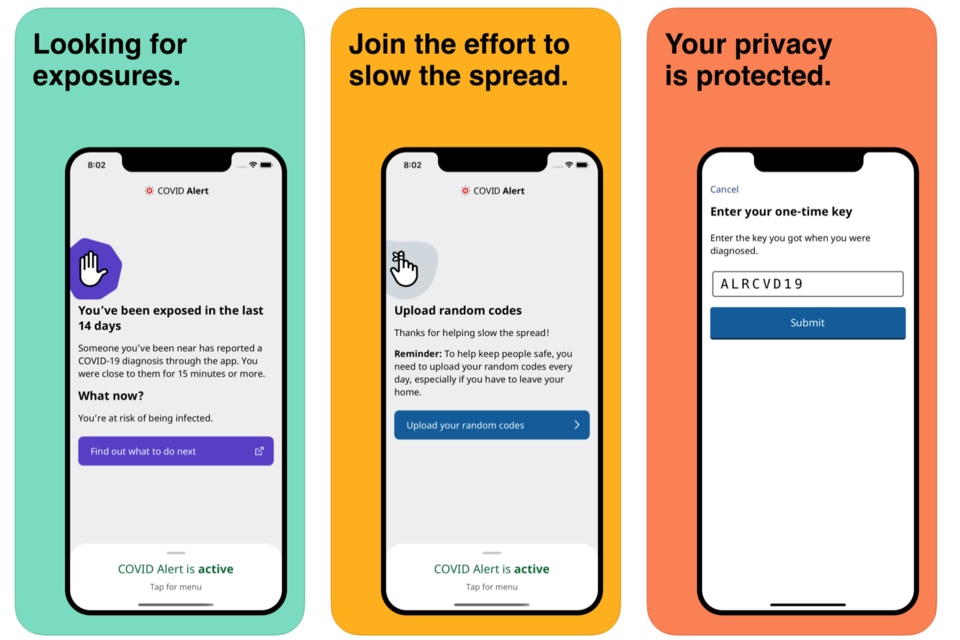In 2020, Canadians quickly joined the rest of the world fighting COVID-19.
At that time, many mused that tough public health measures would be short-lived.
While we see some light at the end of the tunnel in 2021, with new variants this new “normal” may be here to stay for a while.
The hopeful news is that we’ve now got several tools at our disposal to help to reduce the spread. However, there is still one critical tool that has yet to be deployed to its full potential: Canada’s national exposure notification app — COVID Alert.
I live here in B.C. and my Ministry of Digital Government developed the app so I’ll be blunt: I am quite disappointed that my home province of British Columbia still hasn’t opted to use the COVID Alert app. The app is active in most provinces and has been downloaded over six million times. It’s clear that the app can help reduce infections by empowering folks to make smart decisions. It allows people to proactively isolate to protect their family, friends and co-workers if they are notified that they may have been exposed to COVID-19.
COVID Alert is a tool meant to be complementary with contact tracing and other public health measures like social distancing and wearing a mask. It doesn’t collect or share personal data. Instead, anonymized codes are exchanged between phones with the app via Bluetooth after having been within two metres of one another for at least 15 minutes.
If somebody tests positive for COVID-19, they will receive a one-time key from their health-care provider that they enter in the app. This triggers the alert on other devices they have recently been near.
A recent study conducted by the University of Oxford suggests that even when just 15% of the population downloads an exposure notification app, infections can be reduced by as much as 8% and deaths by 6%. These are small, but not insignificant numbers. At six million downloads in Canada, some provinces now exceed that threshold.
I recall a story in Ontario from a teacher using COVID Alert. This elementary school teacher felt fine, but after receiving a notification of a potential exposure she decided to isolate instead of risking infecting her class. Or when a curling bonspiel decided to postpone in the summer, all after a team member got an alert.
I think of my mom, who is living in long-term care in Vancouver. If I got a notification of a potential exposure and I had been feeling fine, I would cancel any visits until I tested negative. But without the app, I may never have known that I might be infectious. And this tool is sitting in the shed here in British Columbia.
British Columbia has signaled the desire to focus on contact-tracing and this application is a non-intrusive, privacy protected compliment to this important task. We are continually updating the app to improve functionality and address the concerns of our provincial and territorial partners and of course, Canadians. We recently tweaked the trace back period to ensure more accurate notifications and expanded functionality to older phones so that now over 98% of smartphones in Canada are compatible.
Walking on West 4th or in Whistler Village this summer, it was clear that people are very eager for a return to normal. But as the second wave hits around the country, we know we must do more. The more Canadians download COVID Alert, the more effective it will be.
Every time a life is saved, or an ICU bed remains open because of this app, COVID Alert has served its purpose.
British Columbians have demonstrated their willingness to protect their communities and loved ones from Covid-19. COVID Alert is one of the tools the freshly elected BC government can use to ensure that citizens are able to make informed decisions to do just that.
COVID Alert can save lives so why isn’t B.C. using it?
Joyce Murray is Canada’s federal Minister of Digital Government.



